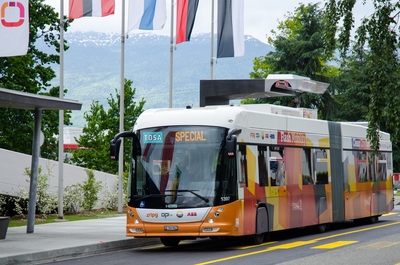ABB develops technology to flash charge electric bus in 15 seconds
ABB has developed a new technology that will help power the world’s first high-capacity flash charging electric bus system.
The flash-charging technology and the onboard traction equipment used in this project were developed by ABB and optimised for high-frequency bus routes in key urban areas, carrying large numbers of passengers at peak times. Onboard batteries can be charged in 15 seconds with a 400 kW boost at selected stops. At the end of the bus line a 3- to 4-minute boost enables the full recharge of the batteries. An innovative electrical drive system enables energy from the roof-mounted charging equipment to be stored in compact batteries, along with the vehicle’s braking energy, powering both the bus and its auxiliary services, such as interior lighting.
The technology will be deployed for the first time on a large-capacity electric bus, carrying as many as 135 passengers. The bus will be charged directly at selected stops with a 15-second energy boost while the passengers enter and leave the bus. The pilot project runs between Geneva airport and the city’s international exhibition centre, Palexpo.

ABB is working together with the city’s public transport company (TGP), the Office for the Promotion of Industries and Technologies (OPI) and the Geneva power utility SIG on the TOSA (Trolleybus Optimisation Système Alimentation) electric bus system pilot project.
TOSA is a zero-carbon-emission solution as the electricity used comes entirely from clean hydro power. The system uses a laser-controlled moving arm, which connects to an overhead receptacle for charging at bus shelters, instead of the usual trolley poles to overhead lines. “Through flash charging, we are able to pilot a new generation of electric buses for urban mass transport that no longer relies on overhead lines,” said Claes Rytoft, ABB’s acting Chief Technology Officer. “This project will pave the way for switching to more flexible, cost-effective, public transport infrastructure while reducing pollution and noise.”
Predictive AI model enhances solid-state battery design
ECU researchers are working on ways to make solid-state batteries more reliable with the help of...
Boosting performance of aqueous zinc–iodine batteries
Engineers from the University of Adelaide have enhanced aqueous zinc–iodine batteries using...
Sodium-ion battery breakthrough boosts energy storage
Scientists have discovered that leaving water inside a key material, rather than removing it,...





